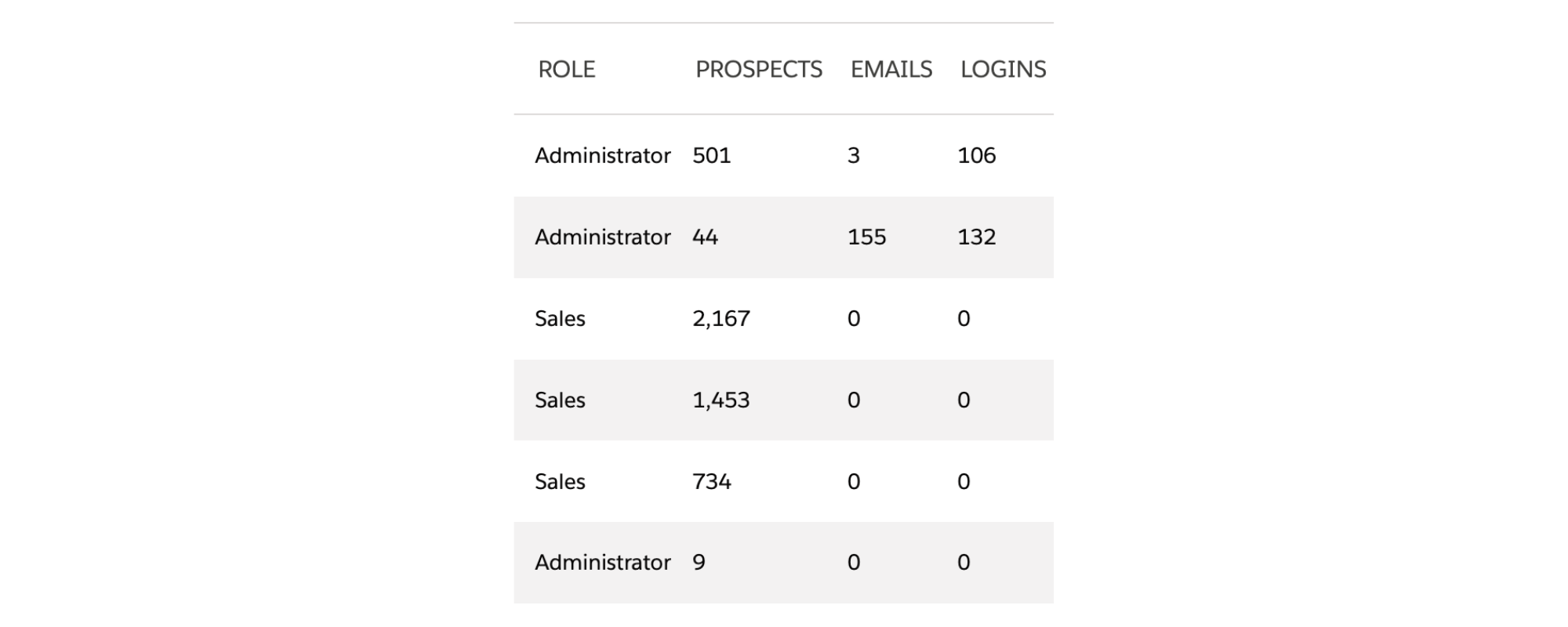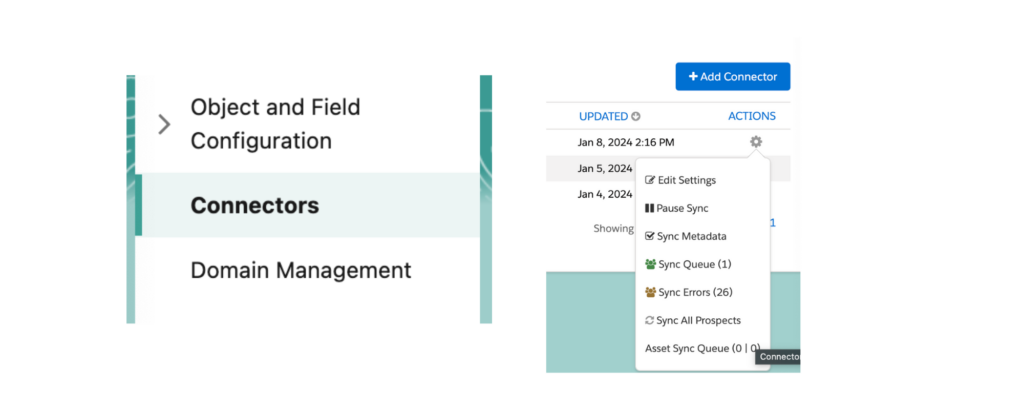Everything You Need to Know About Marketing Cloud Account Engagement: Part 1
Kelsey Stiff – January 16, 2025

Unboxing & Setup
After weeks or even months of discussion, your company finally gave you the green light to purchase Salesforce Marketing Cloud Account Engagement (f.k.a. Pardot). As a marketer, this is very exciting news! Account Engagement is the premier platform for creating 1:1 customer journeys. You have stars in your eyes, and dreams of customized content being sent across every channel. Soon, you will be crushing KPIs and delivering on all of your marketing goals like a well-oiled machine. Right?
While Account Engagement can work wonders for your marketing strategy, it’s often more difficult to implement and fully integrate than many businesses anticipate. Not only is purchasing this software a significant financial investment but implementation also requires a lot of time and energy. Even if you’re already actively using Account Engagement, chances are you’re not fully utilizing all of its features. That’s what expert consultants like myself are here for: to take a closer look and ensure your company uses Salesforce and Account Engagement to their fullest potential.
In this series, I’ll walk you through my best tips and tricks for Account Engagement, starting with part one, which details everything you need to know about unboxing and initial set-up. I’ll begin with my favorite analogy– a tribute to one of my favorite pastimes– to explain the structure of this software and how everything works together. Then, I’ll detail my steps for success, covering everything from user access to data syncing and field mapping. Lastly, I’ll dive into the world of data hygiene; including what data hygiene is and why it matters, all while sharing my top organizational solutions.
Preparing the Account Engagement Garden
I liken setting up and using Account Engagement to starting a garden:
- Begin with healthy soil, which builds the foundation of a well-structured org, and requires proper data hygiene.
- Plant the seeds by aligning campaigns and automation to your marketing goals.
- Water consistently to maintain engagement and nurture leads.
- Prune as needed, just like you would optimize and adjust based on performance in the software.
Even the most proficient gardeners abide by a simple rule; the more you give to your garden, the more it will grow. The same applies to mastering Account Engagement, and by the end of this series, we’ll have you feeling like a marketing maven!
For now, let’s embark on an exciting journey into the world of soil. Like tending to a garden, getting your Account Engagement system in order requires careful preparation. Your team needs proper access and your content must be well-organized to ensure everything runs smoothly. Here’s everything you need to know about the unboxing and set-up process.
Speaking of soil and marketing, have you seen our case study on Lead Calculus, which features one of our clients, the largest potash fertilizer manufacturer in the United States? Lead Calculus catapulted their marketing return on investment 10x over two years.
Steps For Success - Let’s Prepare Some Soil

1. User Access & The Engagement History Lightning Component:
Ensuring everyone on your team is given the correct user access is a critical first step in this setup process. The platform provides predefined roles and the flexibility to create custom roles if the standard ones don’t meet your needs.
Since Account Engagement relies on Salesforce for authentication, we’ll start by setting up the user in Salesforce. Let’s assign the appropriate licenses and permission sets, such as Account Engagement User or Account Engagement Administrator. Keep in mind that these permissions can vary in name, depending on the organization. More information on Account Engagement user roles can be found here.
Giving your sales team proper access and permissions will allow them to view the Engagement History Lightning Component. This custom component can be added to the Lead or Contact page. With proper access, your sales users can view all form fills and landing page interactions of a given lead or contact without needing access to the entire Account Engagement app. In this scenario, your sales reps can focus on more important things (like closing deals!) instead of digging around for information.
2. Organizing Account Set Up:
Out of the box, Salesforce Account Engagement automatically places content in an “Uncategorized” folder, which can quickly become chaotic without a clear structure. Setting up a well-defined folder hierarchy not only keeps assets organized but also supports smoother reporting and tracking when using Connected Campaigns.
A Connected Campaign links Account Engagement campaigns and their related assets—emails, forms, and landing pages—with Salesforce campaigns, unifying engagement data for better visibility and reporting across both platforms. For more details on Connected Campaigns and how to set them up check out this Salesforce Help article.

3. Connected Apps, Integrations, and Connectors:
The Salesforce-Account Engagement Connector syncs key data like prospects, leads, and opportunities between Account Engagement and Salesforce. If a change is made in one, it is represented in the other. We recommend keeping Salesforce as the source of truth. More on that, later.
Regularly monitor the Connector Status and address sync errors promptly to maintain accurate data flow and smooth automation.
A sync error occurs when data between Account Engagement and Salesforce is misaligned. Finding the errors in the Lightning App can be tough - they’re somewhat hidden under “Account Engagement Settings”, then selecting the gear to the right of the Salesforce Connector in “Connectors”.
Understanding sync errors will save you from many headaches, trust me!

4. Data Syncing and Field Mapping Tips:
Use Salesforce as the source of truth. This means that when there are conflicting data points between Salesforce and Account Engagement, Salesforce is always the system you trust to have the most accurate or up-to-date information. For example, if a sales rep updates a lead's status in Salesforce but hasn't yet updated it in Account Engagement, Salesforce should be the system that dictates the correct status. This approach ensures that changes made by the sales team in Salesforce are reflected consistently across all integrated systems.
Keep it simple—don’t sync everything under the sun. Limiting your synced fields reduces back-end processing strain and minimizes the risk of sync errors. Only sync the fields your business needs to keep things running smoothly.
Clean data is your best friend! Keeping your Salesforce records accurate and current ensures better targeting and helps avoid syncing issues. A little effort here goes a long way in ensuring everything runs smoothly and efficiently.
Consistent Data Hygiene is Key
Maintaining healthy data hygiene is essential for cultivating a robust Account Engagement garden. To achieve this, you must regularly audit your records to identify and eliminate duplicate entries, incomplete fields, or outdated information. Keeping your data clean will prevent unnecessary syncing issues and ensure your marketing campaigns are targeted and effective.
One key practice is to review your field mapping settings to ensure there are no mismatches that could lead to errors. Field mapping is connecting the dots on fields that are represented in both Account Engagement and Salesforce. For example, “First Name” in Salesforce should map to “First Name” in Account Engagement.
Remember, the golden rule is to make Salesforce the source of truth—changes made in Salesforce should typically overwrite data in Account Engagement to keep everything aligned.
If you’re manually uploading lists (which I wouldn’t necessarily recommend - use Connected Campaigns!), always double-check that the data is accurate and the fields are mapped correctly. This simple step will save you from frustrating sync problems and ensure your records stay accurate.
The last step in prioritizing data hygiene is to mitigate excessive visitor records. A visitor record in Account Engagement tracks anonymous users who interact with your website before they self-identify (through an activity like filling out a form) and become a prospect. As your marketing efforts grow, these records can stack up over time, causing Account Engagement to become slower and less efficient.
To avoid this, work with your IT team to ensure you have a data retention policy that automatically removes anonymous records after a certain period.
Additionally, you can utilize UTM (Urchin Tracking Modules, or the identifiers added to URLs to help marketers track campaign efficiency) parameters or custom tracking variables to link visitor activities back to a single record. This allows Account Engagement to update an existing visitor record instead of creating a new one for each session.
In Conclusion
Properly setting up Account Engagement is critical for your organization. It’s one of the most important steps in this entire process—just like using healthy soil is one of the most important steps for starting your garden. A well-structured account and proper data hygiene will create a solid foundation for your system and experience.
In part two, you’ll gain more professional advice on how to effectively use and manage Account Engagement for your business. Now that the setup is complete, you can focus on capturing leads, tracking campaigns, and achieving maximum conversions!
Do you have more questions about setting up this software? With Digital Mass as your trusted consultant, you’re ready to unlock the full potential of Account Engagement. You can rely on experts like myself to quickly diagnose set-up errors and get you back on the right track toward marketing greatness. Connect with us.